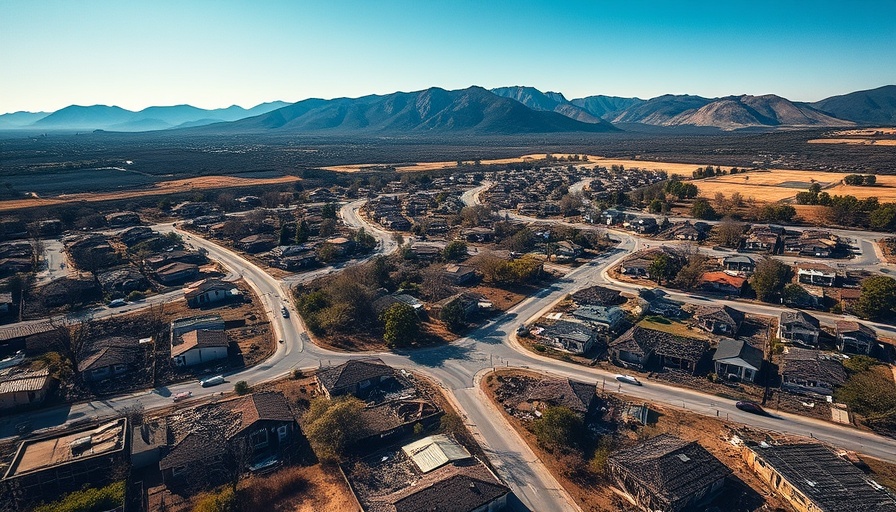
Rethinking Rebuilding in Wildfire Zones
In the wake of devastating wildfires that destroyed thousands of structures in communities like Altadena, California finds itself at a critical juncture. With over 9,000 properties lost, many residents express their sorrow through "Altadena is not for sale" signs, emphasizing the importance of community preservation. However, the reality of California's housing crisis cannot be ignored—the state holds the second most expensive home prices in the nation, trailing only Hawaii, putting pressure on affordable housing for residents.
The Housing Affordability Crisis
As of December 2024, the median cost of homes in California has soared to approximately $800,000, with Los Angeles prices nearing $1 million. This alarming situation emerged not solely from market forces but from artificial constraints, particularly restrictive zoning regulations that limit urban development. The UC Berkeley’s Other & Belonging Institute report reveals that over 95 percent of California's residential land is restricted to single-family zoning, stifling growth in cities that need it the most.
Urban Sprawl’s Connection to Wildfire Risk
The outward expansion of housing development, primarily through single-family homes, has contributed to a dangerous intersection with wildfire-prone vegetation. This combination enhances wildfire risks in the wildland-urban interface (WUI), where existing infrastructure collides with nature. The increased pressure for homeownership, driven by restrictive zoning laws, creates housing in areas that are at higher risk for wildfires, as seen across numerous communities in California.
Examining Recent Legislative Responses
In a response to the increasing wildfires, Los Angeles County officials have taken steps to reshape land use, emphasizing denser development while minimizing risks in the foothills where fires are more predominant. This initiative follows the tragic destruction of properties in Altadena, underscoring the need for strategic rebuilding. In December 2024, these officials approved measures to enable more housing in the community, signaling a shift in how local governments view zoning-related issues.
Benefits of Multi-Family Housing
Statistics from the National Multifamily Housing Council illustrate staggering inefficiencies in detached single-family homes, which average only three housing units per acre, compared to multi-family units that can host up to 176 units in the same space. The best way forward for impacted communities is to embrace denser housing models that replace the homes lost to fire in a more sustainable way, mitigating future risks while increasing availability.
Reforms Needed for Sustainable Growth
Governor Gavin Newsom's recent suspension of compliance requirements with the California Environmental Quality Act aims to expedite rebuilding efforts, recognizing that existing regulations can inhibit development. While measures like SB 9, allowing property owners to build more units on single-family plots, show progress, they remain insufficient in addressing the broader housing crisis. True reform requires evaluations of zoning policies that allow denser living arrangements, thereby expanding capacity without expanding outward—which ultimately leads to dangerous wildfire risks.
A Path Forward for Communities
California's burn zones offer a unique opportunity to lead the way in rethinking housing strategies. By lifting restrictive single-family zoning laws and land-use controls, communities like Altadena can demonstrate the benefits of embracing new development mindsets. Not only can higher density help alleviate the core housing crisis, but it can also enhance the resilience of communities against future wildfires.
Concluding Thoughts: Why You Should Care
As residents of Bakersfield, the implications of these trends will have a direct impact on many aspects of our lives. The balance of maintaining community integrity while addressing the urgent housing needs presents a challenge that can shape our future. Understanding local housing policies, advocating for sensible zoning reforms, and participating in community planning discussions can help build a safer, more affordable California for everyone.
Your voice matters. Engage in local discussions, attend community meetings, and advocate for strategic housing solutions to ensure that your community remains vibrant, accessible, and resilient in the face of future challenges.
 Add Row
Add Row  Add
Add 



Write A Comment